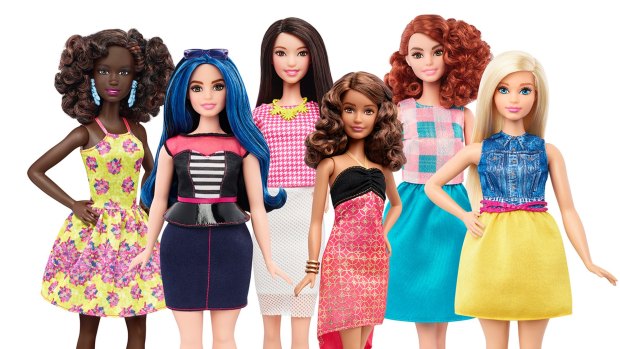This was published 5 years ago
Opinion
How Christmas gifts can reinforce toxic gender stereotypes
Clementine Ford
WriterChildren around the country are excitedly waking up this morning to presents under the tree, but some of these interactions may be fraught at best and downright hostile at worst.
Despite the many gains we’ve made in challenging gender stereotypes and manufactured "traditions", there are still some people who insist on forcing their kids into rigid boxes based on the sex they were assigned at birth.

We should encourage children to develop their own interests, free from gendered ideas about toys and games.Credit: Shutterstock
For some boys in particular, the ability to express themselves and their interests freely without being shamed for their so-called "feminine" idiosyncrasies is still made impossible by parents and relatives who insist on maintaining a strict division between the pursuits of boys and girls.
Just a few weeks ago, a conservative American male writer named Carmine Sabia demonstrated just how fragile some people remain about challenges to the construct of masculinity. He wrote, “Earlier this month, Kevin Hart said as a straight man he would not want his son to be gay and if his son played with a dollhouse he would break it. You would have a tough time finding straight men that would not agree. People are allowed to have opinions that offend you. Deal with it.”
The irony of someone arguing for the right to hold different opinions while defending the breaking of a child's toy (and spirit) is not lost here, but Sabia and Hart are not alone here. All too many people – and this includes women – are deeply invested in forcing children to conform to gender stereotypes that reassure them that nothing is amiss in their world.

Dolls aren't just for girls, just as trucks aren't just for girls.Credit: MATTEL
Since the early parts of the 20th century, capitalist forces and social ideals have assigned everything from colours to clothes and personal interests along strict gender lines. The rise of "gender reveal" parties is representative of this, with parents-to-be using all these indicators to assign identities to children not yet born. Pink is the universal symbol for girls while boys are associated with blue. Clothes are carefully coded as well, with girls’ aisles still teeming with ruffles and frills and boys’ aisles featuring more utilitarian designs.
The first association with pink and blue as a means of coding gender used to be the opposite.
But interestingly, the first association with pink and blue as a means of coding gender used to be the opposite. Pink being closer to red was thought to be a more masculine colour, aligned with passion and Mars (the God of War). Blue was considered calming and therefore feminine, which is why all the most popular depictions of the Virgin Mary show her shrouded in a blue veil. It wasn't until close to the 1950s that the script was flipped. Despite gendered colour coding being less than 100 years old, too many people still refer to it as if it's some kind of biological imperative rather than an arbitrary habit.
In my book Boys Will Be Boys, I wrote the following: “We’ve moved on a lot from the postwar period of petticoats and undershirts but mass cultural anxiety about the clothes we dress our children in seems to persist. It's hard to say which one makes parents more fearful – their son being confused for a girl or their daughter being confused for a boy. Society might have its own insecurity and inherent misogyny, femmephobia and queerphobia to answer to for that but it's definitely an insecurity that has been happily seized on by capitalist forces.”
I thought of this again this week when I watched a short documentary about men and high heels on the Huffington Post. For men living in the shadow of homophobia, transphobia and misogyny, wearing clothes that are strictly coded as female opens them up to broad range of violence, from bullying to physical attacks. But similar to colour coding, heels were not always associated with women and femininity. Once the domain of men, it wasn't until the 17th century when women began wearing heels.
Leaving aside the chiropractic argument against high heels, it seems ridiculous that an inanimate object can inspire such fear and hostility in people who will also invariably lay claim to being less sensitive than the "snowflakes" who are trying to stop kids from being kids … or something.
We have a two-year-old son, and we've always been careful to nourish his curiosity with a broad range of activities and items. It's true he loves playing with cars and trucks. But he also loves the colour pink, his dolly stroller and putting bows in his hair. And yes, dollhouses. The thought of denying him something that provides healthy enjoyment and skill building is absurd.
It says a lot about how fragile men (such as Sabia and Hart) truly are that they would feel the need to destroy something a child likes because it threatens their sense of what "proper" masculinity looks like. Because what's being broken by these attitudes isn't just a toy – it's also the trust a child places in a parent to protect them, to encourage them and to provide safe shelter no matter what.
But it's also men. Men are being broken by attitudes like these, and they learn to break other future men in return.
Have a merry Christmas, everyone. And remember, love and support are the greatest, most enduring gifts you can give your children.